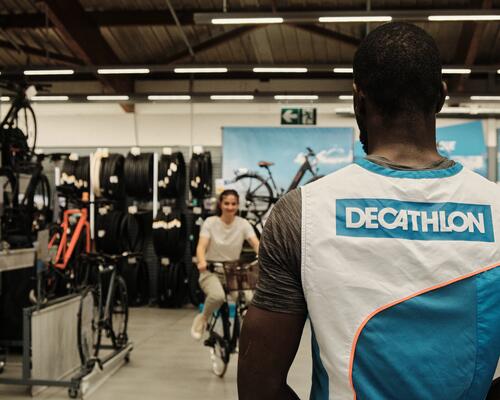On which products is environmental labelling available?
By 2022, environmental labelling was available on 60.7% of textile and footwear product pages.
There are several reasons why this type of product has been given priority. Historically, this is the type of product that French and European work began with. This means that the assessment methods and databases for this product category are the most advanced.
Footwear and textiles are the product categories most easily renewed by consumers. It is therefore a major challenge to make consumers understand that each product has an impact on the environment.
Shoes and textiles account for the majority of products sold by DECATHLON.
The data as of 31/12/2023 is temporarily unavailable for several reasons:
▪ An IT problem has been underway since December 2023, preventing DECATHLON from viewing the environmental labelling section on its product pages. As a result, it is impossible to extract the number of product pages on which the carbon footprint is displayed as of 31 December 2023;
▪ In addition, the database used to calculate the environmental assessment was updated in 2023, to bring it into line with the development of European standards for the PEF (Product Environmental Footprint) method. The new calculation of the carbon footprint of DECATHLON products required all the data to be sent back from the design tools to the customer display. These massive data transfers take time, as environmental data passes through several digital tools before being made available to customers.
However, DECATHLON's objectives are to continue implementing environmental labelling for all textile and footwear products and to reinstate environmental labelling on the product pages of the e-commerce website in 2024, with the aim of achieving 100% of DECATHLON's textile and footwear products having a carbon footprint labelling by 2026.





